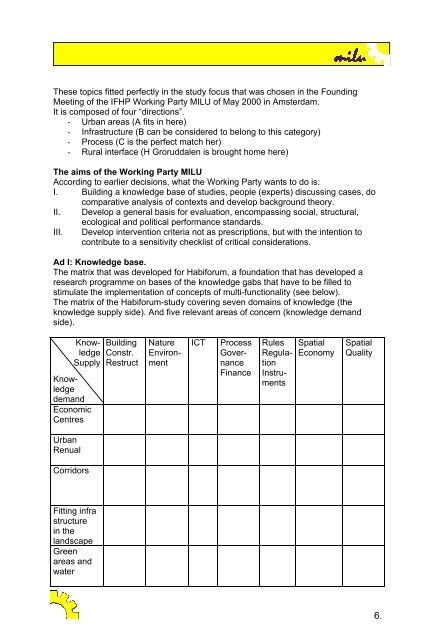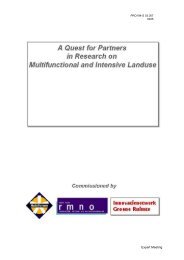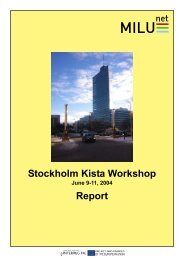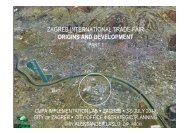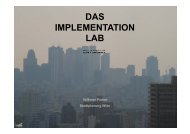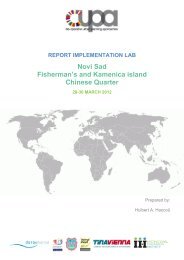2001-June 6-8 MILU - Iiinstitute.nl
2001-June 6-8 MILU - Iiinstitute.nl
2001-June 6-8 MILU - Iiinstitute.nl
Create successful ePaper yourself
Turn your PDF publications into a flip-book with our unique Google optimized e-Paper software.
These topics fitted perfectly in the study focus that was chosen in the Founding<br />
Meeting of the IFHP Working Party <strong>MILU</strong> of May 2000 in Amsterdam.<br />
It is composed of four “directions”.<br />
- Urban areas (A fits in here)<br />
- Infrastructure (B can be considered to belong to this category)<br />
- Process (C is the perfect match her)<br />
- Rural interface (H Groruddalen is brought home here)<br />
The aims of the Working Party <strong>MILU</strong><br />
According to earlier decisions, what the Working Party wants to do is:<br />
I. Building a knowledge base of studies, people (experts) discussing cases, do<br />
comparative analysis of contexts and develop background theory.<br />
II. Develop a general basis for evaluation, encompassing social, structural,<br />
ecological and political performance standards.<br />
III. Develop intervention criteria not as prescriptions, but with the intention to<br />
contribute to a sensitivity checklist of critical considerations.<br />
Ad I: Knowledge base.<br />
The matrix that was developed for Habiforum, a foundation that has developed a<br />
research programme on bases of the knowledge gabs that have to be filled to<br />
stimulate the implementation of concepts of multi-functionality (see below).<br />
The matrix of the Habiforum-study covering seven domains of knowledge (the<br />
knowledge supply side). And five relevant areas of concern (knowledge demand<br />
side).<br />
Knowledge<br />
Supply<br />
Knowledge<br />
demand<br />
Economic<br />
Centres<br />
Building<br />
Constr.<br />
Restruct<br />
Nature<br />
Environment<br />
ICT<br />
Process<br />
Governance<br />
Finance<br />
Rules<br />
Regulation<br />
Instruments<br />
Spatial<br />
Economy<br />
Spatial<br />
Quality<br />
Urban<br />
Renual<br />
Corridors<br />
Fitting infra<br />
structure<br />
in the<br />
landscape<br />
Green<br />
areas and<br />
water<br />
6.


